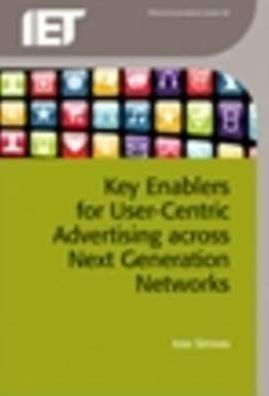Key Enablers for User-Centric Advertising Across Next Generation Networks
Telecommunication and internet services are constantly subject to change, seeking the customer's full satisfaction. Enriching these services with innovative approaches such as contextaware, social, mobile, adaptable and interactive mechanisms, enables users to experience a variety of personalized services seamlessly across different platforms and technologies. In this sense, advertising is no exception, especially if we consider that it will become the business enabler for next generation services. Nevertheless, currently there is no cross-domain solution capable of delivering real-time advertising across heterogeneous environments or domains, and at the same time, address user needs, desires and intentions. This is because most of the products available today are only used within isolated environments / silos. Therefore, managing advertising campaigns across different verticals is still very complex. However, leveraging on the advances provided by Next Generation Networks, together with the design principles inherent to Service Oriented Architectures and capabilities offered by Service Delivery Platforms, this scenario is about to change. Based on key conceptual entities called enablers, this work aims to change the current scenario. More concretely, this book introduces three distinct but complementary enablers. The Human Enabler provides a real-time context brokerage system capable of securely managing different types of user-related data in a standardized way. The Reasoning Enabler is the result of a welldefined methodology that enables new knowledge to be reasoned, based on previously stored data, by aggregating, correlating and inferring new information about people and their contexts. Lastly, the Session Management Enabler is responsible for abstracting the communication layers. It provides a context-aware multimedia delivery system capable of personalizing and adapting multimedia content according to a set of user and system pre-defined context data or rules, respectively. Altogether, they form the Converged User-Centric Advertising System and introduce new features that address the needs of both users and advertisers.
1115249468
Key Enablers for User-Centric Advertising Across Next Generation Networks
Telecommunication and internet services are constantly subject to change, seeking the customer's full satisfaction. Enriching these services with innovative approaches such as contextaware, social, mobile, adaptable and interactive mechanisms, enables users to experience a variety of personalized services seamlessly across different platforms and technologies. In this sense, advertising is no exception, especially if we consider that it will become the business enabler for next generation services. Nevertheless, currently there is no cross-domain solution capable of delivering real-time advertising across heterogeneous environments or domains, and at the same time, address user needs, desires and intentions. This is because most of the products available today are only used within isolated environments / silos. Therefore, managing advertising campaigns across different verticals is still very complex. However, leveraging on the advances provided by Next Generation Networks, together with the design principles inherent to Service Oriented Architectures and capabilities offered by Service Delivery Platforms, this scenario is about to change. Based on key conceptual entities called enablers, this work aims to change the current scenario. More concretely, this book introduces three distinct but complementary enablers. The Human Enabler provides a real-time context brokerage system capable of securely managing different types of user-related data in a standardized way. The Reasoning Enabler is the result of a welldefined methodology that enables new knowledge to be reasoned, based on previously stored data, by aggregating, correlating and inferring new information about people and their contexts. Lastly, the Session Management Enabler is responsible for abstracting the communication layers. It provides a context-aware multimedia delivery system capable of personalizing and adapting multimedia content according to a set of user and system pre-defined context data or rules, respectively. Altogether, they form the Converged User-Centric Advertising System and introduce new features that address the needs of both users and advertisers.
155.0
In Stock
5
1

Key Enablers for User-Centric Advertising Across Next Generation Networks
304
Key Enablers for User-Centric Advertising Across Next Generation Networks
304Hardcover
$155.00
155.0
In Stock

Product Details
| ISBN-13: | 9781849196185 |
|---|---|
| Publisher: | The Institution of Engineering and Technology |
| Publication date: | 12/15/2012 |
| Series: | Telecommunications |
| Pages: | 304 |
| Product dimensions: | 6.14(w) x 9.21(h) x (d) |
About the Author
From the B&N Reads Blog
